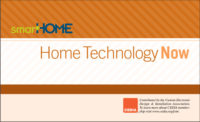Lion, ice cream sandwich, iOS, Android smartphone, tablet, mobility, the cloud, streaming services, and so on and so on. The amount of innovation and change over the last few years is incredible, and to many — including me — it can feel overwhelming. Less comforting is knowing that the pace at which these products come out will only speed up in the coming years. As this happens, the question soon becomes how to keep up with the ever-changing tidal wave of electronic products that clients desire and still operate a profitable business? These technologies are creeping into every aspect of the low-voltage industry — including security.
There is no doubt that it is an extremely competitive landscape right now. Being first-to-market with a truly innovative product means billions of dollars in sales for the manufacturer; but it has created chaos for low-voltage dealers as they struggle to keep up with educating their staff and developing new sales and marketing strategies for these products. The latest and greatest new products often come in at significantly lower margins than their predecessors, as well.
In order to help separate the wheat from the chaff, the Custom Electronic Design & Installation Association’s (CEDIA) Technology Advisory Group created a series of resources to look at the overarching technologies and market conditions that will affect low-voltage installers during the next five years. CEDIA analyzed market research, both internal and external, and came up with some very solid conclusions.
By looking five years ahead, this business intelligence allows dealers to take a very careful look at new business opportunities and prepare a proper business plan, which includes educating their workforce, before taking on a new technology. It must be stressed that knowledge is doubling every 2.5 years, so technically we only know 25 percent of what we will know five years from now; so there certainly will be technological and economic events that can change the outcomes significantly. However, in a perfect world, here are five predictions for the Electronic Systems Contractor (ESC) of 2016:
1. The truly “connected home” will have arrived in 2016, allowing for homes to be more interactive and intelligent. These homes will utilize wireless devices, which send bi-directional (peer-to-peer) data and commands. Many ESCs lack the in-depth knowledge of IP required to design the connected home and are not ready for their clients’ needs in five years.
2. Networking and IP will be pervasive in most products; mobile devices will be the primary interface for electronics installed in a client’s home. Many manufacturers seem uncertain of IP’s pervasiveness in 2016.
3. Retrofit and remodel work will continue to be a mainstay of ESCs as new housing construction will not have returned to the peak production levels seen in 2007. The demographics of the ESC’s clients will continue to change as the number of older Americans rapidly grows, while the younger generation becomes more ethnically diverse in every major U.S. city.
4. Higher-margin products will continue to become commoditized. This is made possible because of Moore’s law and lower energy consumption for processing power.
5. In 2016, systems integration will support new modes of interaction with home electronics such as gesture recognition, voice control and sensing human heat signatures.
According the CEDIA Research Report, “Size and Scope of the Residential Electronic Systems Market in the US in 2011©,” some security professionals are already completing installations in the home beyond the category of security and surveillance, and more are looking to expand into home automation.
CEDIA provides an in-depth forecast on the future of the industry in The ESC of 2016 white paper, available exclusively to CEDIA members at no cost. Members may request a copy in the CEDIA Marketplace at www.cedia.org/marketplace or e-mail techcouncil@cedia.org. Additional top-level findings from the white paper are shared in the most recent emerging trends video available at www.cediacrosspoint.com.


